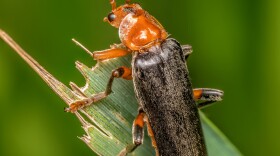If asked about an insect species that migrates long distances, most people think of the Monarch Butterfly. And while Monarchs do travel incredible distances, they are not alone.
It turns out that a number of insects use migration as a way to survive winter and find better habitat with the changing seasons.
One migrating species that flies below most people’s radar is the Common Green Darner.
With a body length of about 3 inches, these sizeable dragonflies can travel up to 900 miles. As spring begins to unfold in the central and northern portions of the US, the first generation of green darners leave their southern birthplace and begin flying north.
After finding suitable northern habitat to mate and lay eggs, their offspring quickly develop, emerging as adult dragonflies in late summer. Taking their cues from the changing weather, this next generation will travel back south in the fall.
For a long time, dragonfly experts understood very little about this journey. Researchers even tried attaching tiny radio transmitters to individual dragonflies with little success.
It wasn’t until researchers conducted a study that was published in 2018 that shed some light on the Common Green Darner’s mysterious migration.
By extracting chemicals from wing samples of green darner specimens found in museums and private collections, researchers were able to determine where the individual insects were born, unfolding 140 years of dragonfly migration history.
Incredibly, these dragonflies follow the same migration routes that their great-grandparents once did.
Even more amazing, they do so without any knowledge passed down from one generation to the next.
And while researchers have some ideas, it’s still a mystery as to how they know exactly where to go.





